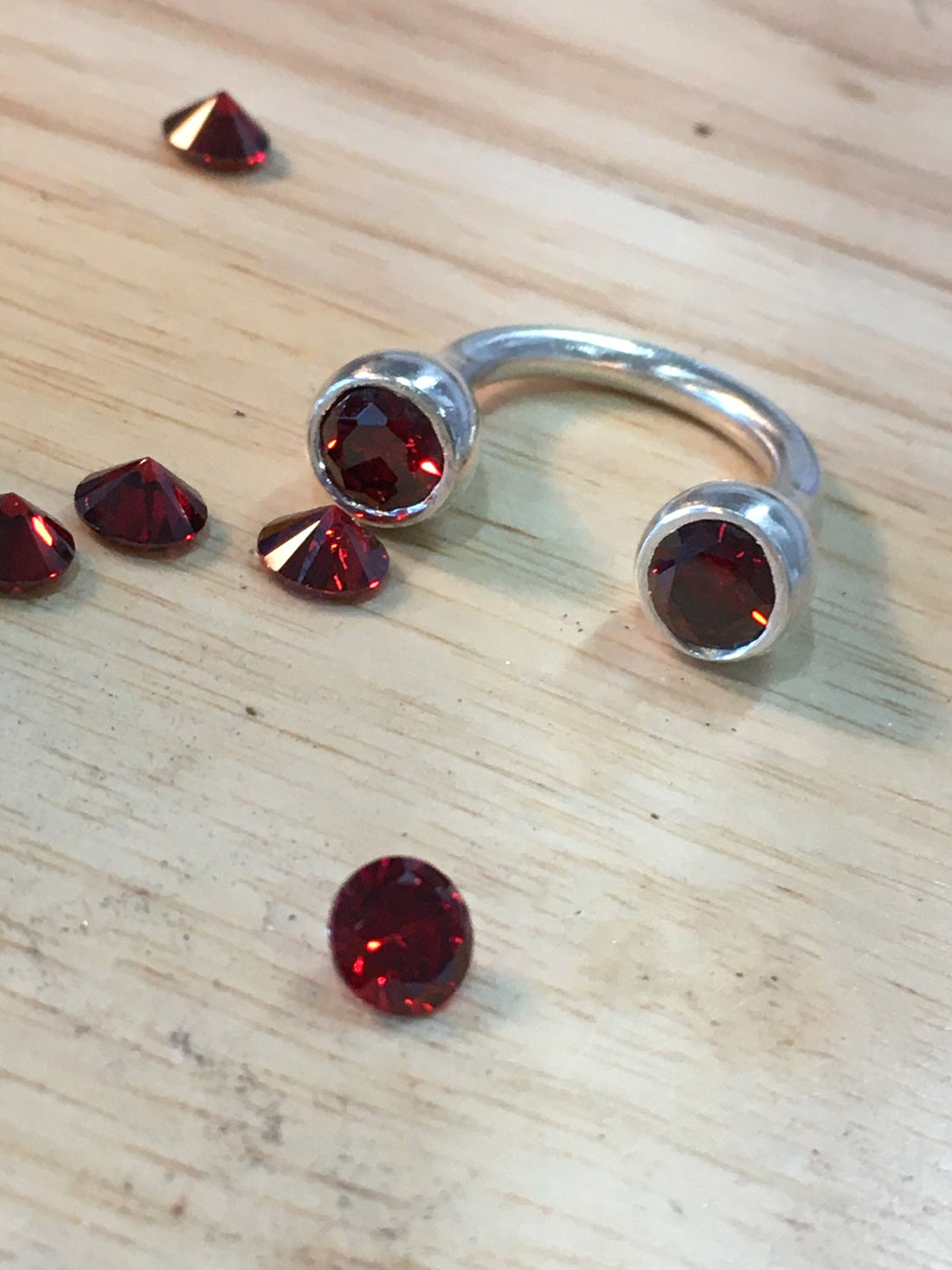
Can Sterling Silver get wet?
Share
Can sterling silver get wet? Sterling silver is a very popular choice with jewellers and the public alike, when designing, making and purchasing jewellery. Its incredibly versatile, being worn at formal and casual events alike. But what happens when sterling silver gets wet? We often wear our sterling silver when we go swimming, take a shower, or wash our hands, each time getting our sterling silver jewellery wet. In this article we will investigate the common misconceptions surrounding the effects of sterling silver getting wet and provide practical tips for care and maintenance.
Table of Contents
1. Can Sterling Silver get wet?
Before exploring how water affects sterling silver jewellery, it's crucial to understand what sterling silver is. Sterling silver is an alloy composed of 92.5% pure silver and 7.5% other metals, usually copper. This combination enhances the metal's strength and durability while maintaining its lustrous appearance. Despite its durability, sterling silver is susceptible to tarnishing and corrosion when exposed to certain elements, including water.
Sterling silver can get wet, but it is susceptible to tarnish and corrosion when exposed to water. This susceptibility increases tenfold when chemicals and salts are found in the water.
Contrary to popular belief, water alone does not typically cause significant damage to sterling silver jewellery. Pure water, devoid of any harsh chemicals or contaminants, is generally harmless to sterling silver. However, prolonged exposure to water, particularly in environments with high humidity or chlorine content, can accelerate tarnishing.
Pure water, devoid of any harsh chemicals or contaminants, is generally harmless to sterling silver when it gets wet
Chlorine, commonly found in swimming pools, can react with the copper in sterling silver, leading to tarnish or discolouration. Additionally, minerals present in tap water or saltwater can contribute to tarnishing over time. While occasional exposure to water may not cause immediate harm, it's essential to take precautions to preserve the integrity of your sterling silver jewellery.
It's the chlorine found in swimming pools or the salt in salt water at the beach, that can increase the effects of tarnish and discolouration when sterling silver gets wet.
2. Best Practices for Cleaning wet Sterling Silver
Dry Thoroughly:
After exposure to water, whether from swimming, showering, or washing hands, ensure your sterling silver jewellery is dried thoroughly using a soft, lint-free cloth. Avoid air-drying, as this can lead to water spots and potential tarnishing. Yes, your sterling silver can get wet, but this will ensure it tarnishing is delayed.
Avoid Chemical Exposure:
Keep sterling silver jewellery away from harsh chemicals, including chlorine, detergents, perfumes, and cosmetics. Remove jewellery before swimming in chlorinated pools, hot tubs, or engaging in activities involving household cleaners. This can often be hard, but it will prolong the life of your sterling silver pieces. Sterling silver can get wet, but if the water has chemicals, it will affect the longevity of your jewellery.
Storage:
Store sterling silver jewellery in a cool, dry place away from direct sunlight and moisture. Consider using anti-tarnish pouches or cloth to prevent tarnishing and maintain shine. Again this is only for more formal pieces. Sterling silver is made to be worn and can be repaired, if tarnish and discolouration does start to occur.
Regular Maintenance:
Incorporate regular cleaning and maintenance into your jewellery care routine. Use specialised silver cleaner and a soft-bristled brush to gently clean tarnish and residue. Rinse thoroughly with pure lukewarm water and dry immediately. Sterling silver can get wet, but you need to make sure you dry it completely.
Professional Care:
For intricate or heavily tarnished pieces, consider seeking professional cleaning and maintenance from a reputable jeweller. They have the expertise and tools to restore your sterling silver jewellery to its original lustre.
If you are interested in more information on how to care for your sterling silver jewellery, please click here to read my article on TOP TIPS FOR CLEANING SILVER
Water alone does not typically cause significant damage to Sterling silver when wet. Its the additional chemicals, like chlorine, salt, and detergent that increases the risk of tarnishing your sterling silver.
3. Can Sterling Silver get wet? Dispelling Common Myths:
Myth: Water Causes Rust, when Sterling Silver gets wet:
Sterling silver does not rust like iron or steel. Instead, it tarnishes due to oxidation, a natural reaction between silver and sulphur-containing compounds in the air or water.
Myth: Your Skin Green when Sterling Silver get wet
While some individuals may experience skin discolouration when wearing sterling silver jewellery, it's usually not caused by water alone. Skin reactions often result from the presence of other metals in the alloy or individual skin chemistry.
Conclusion: Can Sterling Silver get wet?
In conclusion, while water exposure can contribute to tarnishing and corrosion of sterling silver jewellery over time, it does not necessarily ruin the metal. By following proper care practices, such as thorough drying, avoiding chemical exposure, and regular maintenance, you can preserve the beauty and longevity of your sterling silver pieces.
Remember, sterling silver can get wet and is meant to be enjoyed! So wear your sterling silver with confidence, knowing that with the right care, even when wet, it will continue to shine for years to come.
More Blogs by Rahaima
- Cubic Zirconia Vs Lab Grown Diamonds by Rahaima
- What is 925 Sterling Silver? By Rahaima
- What is Silversmithing? by Rahaima